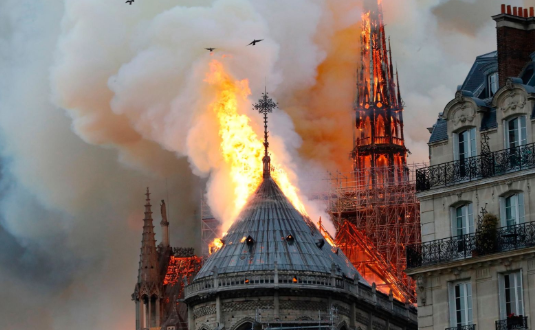A major fire broke out Monday at France’s world-famous Notre-Dame de Paris Cathedral, the flames caused the cathedral's narrow spire to collapse.
Construction of the cathedral began in 1160 under Bishop Maurice de Sully and was largely complete by 1260, though it has been modified frequently in the ensuing centuries. In the 1790s, Notre-Dame suffered desecration during the French Revolution; much of its religious imagery was damaged or destroyed. The cathedral escaped relatively unscathed during the first and second world wars.
Experts say the combination of a structure that is more than 850 years old, built with heavy timber construction and soaring open spaces, and which lacks modern fire-protection systems inhibited firefighting operations.

At the time of the fire, the cathedral was undergoing renovations. A Paris fire brigade official stated the fire is "potentially linked" to this 6 million-euro renovation project on the church's spire and its 250 tons of lead. The official cause of the fire remains under investigation. Authorities say that the cathedral’s structure, including its landmark rectangular towers, have been saved.
The installation of modern fire detection and suppression system, and fire prevention methods must become a priority if we are to ensure the safety of these irreplaceable heritage buildings.







